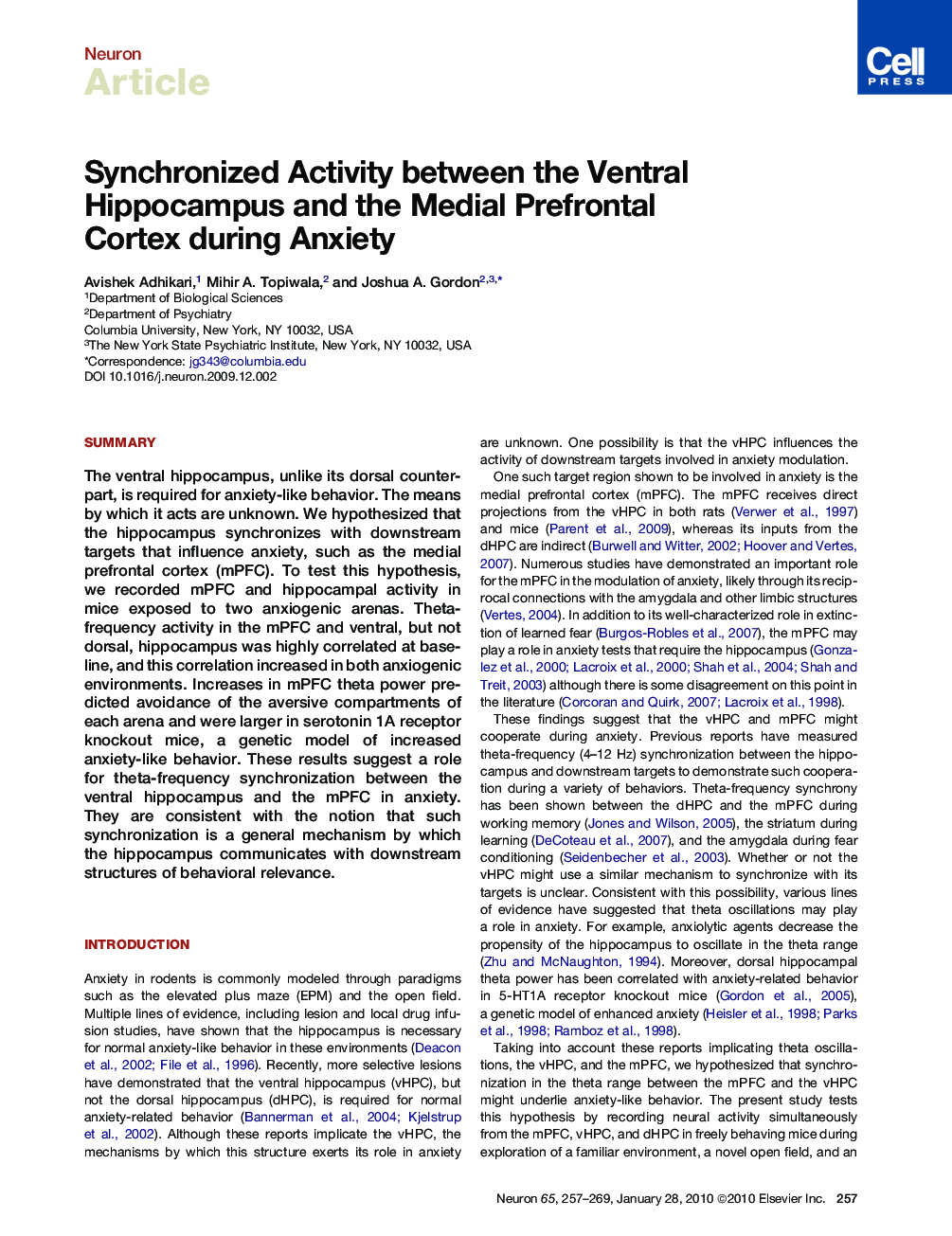| Article ID | Journal | Published Year | Pages | File Type |
|---|---|---|---|---|
| 4321614 | Neuron | 2010 | 13 Pages |
SummaryThe ventral hippocampus, unlike its dorsal counterpart, is required for anxiety-like behavior. The means by which it acts are unknown. We hypothesized that the hippocampus synchronizes with downstream targets that influence anxiety, such as the medial prefrontal cortex (mPFC). To test this hypothesis, we recorded mPFC and hippocampal activity in mice exposed to two anxiogenic arenas. Theta-frequency activity in the mPFC and ventral, but not dorsal, hippocampus was highly correlated at baseline, and this correlation increased in both anxiogenic environments. Increases in mPFC theta power predicted avoidance of the aversive compartments of each arena and were larger in serotonin 1A receptor knockout mice, a genetic model of increased anxiety-like behavior. These results suggest a role for theta-frequency synchronization between the ventral hippocampus and the mPFC in anxiety. They are consistent with the notion that such synchronization is a general mechanism by which the hippocampus communicates with downstream structures of behavioral relevance.
► Neural activity in the mPFC is more synchronous with ventral than dorsal hippocampus ► Theta-frequency synchrony between the vHPC and mPFC increases with anxiety ► Theta activity in the mPFC correlates with anxiety-related behavior ► mPFC theta increases more strongly in a genetic model of increased anxiety
